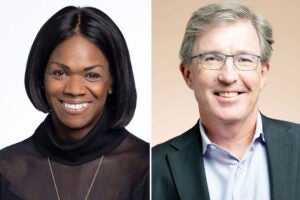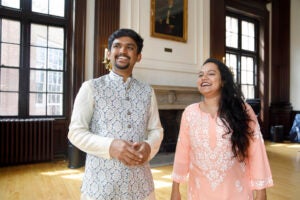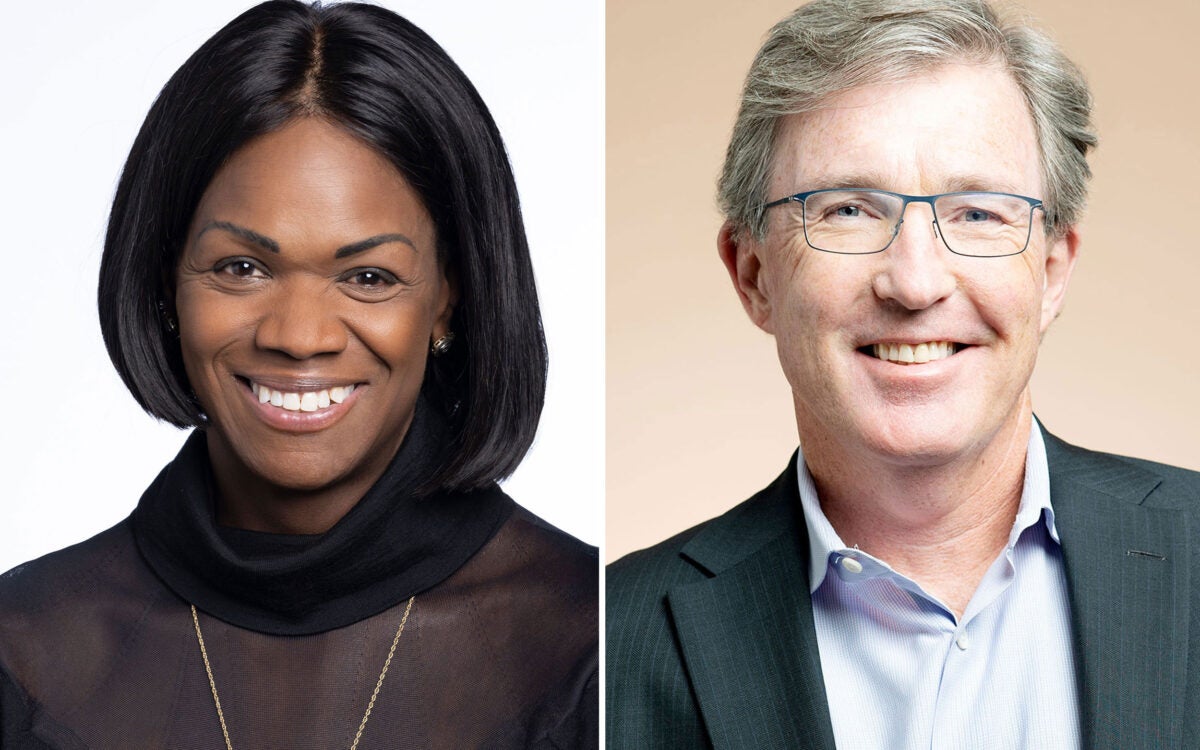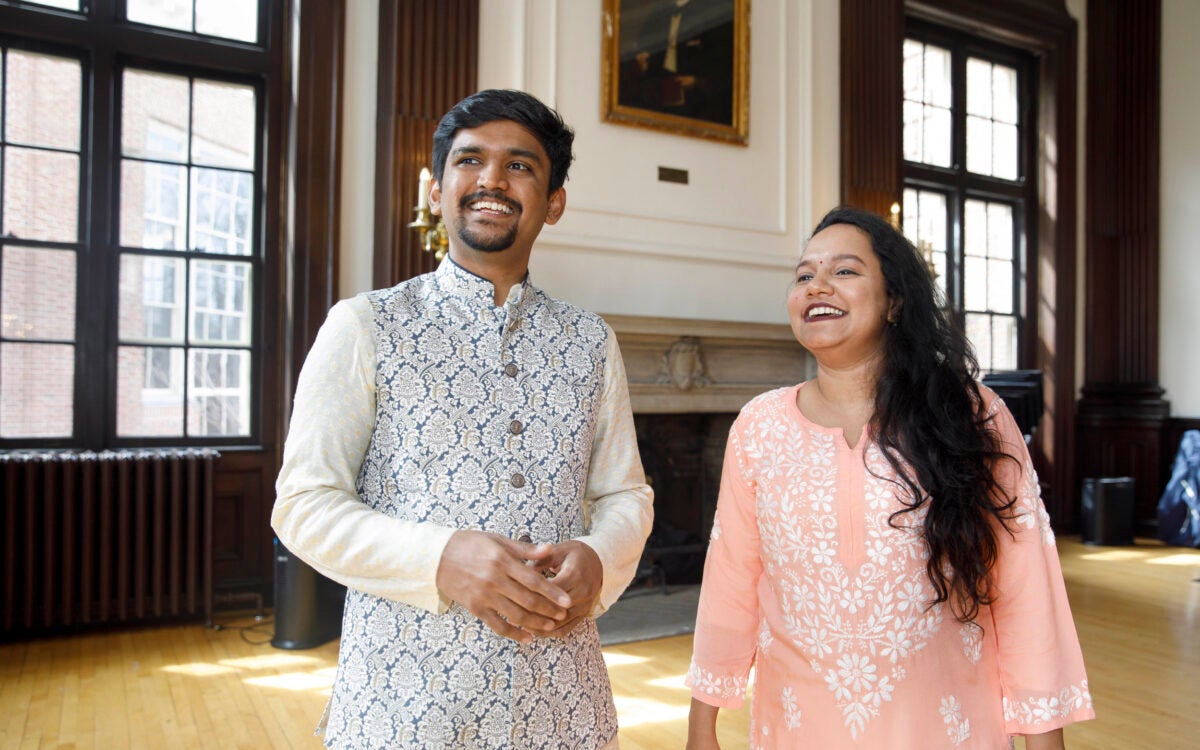A family’s recollections of commencements
Class Day bacchanals, elegant ‘spreads,’ Teddy Roosevelt’s reunion
William Lawrence, the Episcopal bishop of Massachusetts from 1893 to 1927, lived with his very large family on Brattle Street in a big white house on the Episcopal Divinity School grounds. The Longfellows lived next door. Lawrence was a member of the Class of 1871, a time when Harvard was transitioning from a college to a university under President Charles W. Eliot. For more than 50 years, Lawrence served at the University in various official capacities. And the entire family took great interest in Harvard sporting events, boat races, the Hasty Pudding Theatricals, and the Commencement ceremonies. Their recollections offer an intimate, lively look at a number of Harvard graduation ceremonies at the turn of the last century.
In 1926, Lawrence published his autobiography, “Memories of a Happy Life.” In 1967, his daughter, Marian Lawrence Peabody, then in her 90s, published “To Be Young Was Very Heaven.” These reminiscences show that although some things change, much stays the same, including certain rituals — and worries — around Commencement. Then as now, people considered the weather and what they would wear, and they looked forward to the Commencement celebrations — and, then as now, sometimes the unexpected happened.
Among the major social events surrounding a 19th century Commencement were the series of lavish sponsored “spreads” of food and drink for invited guests. They were held all over the campus and were so fashionable that the names of the student sponsors and groups were listed in Boston newspapers.
A more raucous event was the Class Day dance around the “Tree.” It had become a tradition for the graduates to circle — hand in hand and employing a mélange of dance steps — around an elm tree in the Harvard-Hollis-Holden Quadrangle. At a certain stage in the rowdy round, the students raced to pull off a wreath of flowers placed high up in the tree, climbing up each other’s backs to reach the prize. The Class Day “Tree” ritual eventually got so out of hand (nicely fueled, as it sometimes was, by potables) that it was stopped in 1896, to the strenuous objection of the students. According to Hamilton Vaughan Bail in “Views of Harvard,” the actual tree used in the “Tree” dance was killed in the 1909 leopard moth blight. Harvard did try to save it, cutting it back, stripping the bark, and painting it with a wood preservative — but without success.
The Bishop’s daughter, Marian Lawrence, described the Class Day of 1892, which she attended when she was 17. “Though [the weather was] undecided early, it was gorgeous by noon. My dress was organdy muslin with blue in it and blue bodice and sash. Very stylish. … It had a train and elbow sleeves, trimmed with deep lace. My hat was trimmed in front with white ostrich plumes and was immense, which did not make dancing any easier. Papa and I went to the Gymnasium Spread. This was the best ever, a prettily decorated hall, plenty of room to dance and splendid music. The snappiest band I ever heard. Even Papa thought it was great when they played ‘Ta-ra-ra boom-de-ay.’” Miss Lawrence had many partners, the young men even vying for just half a dance with her.
Then everyone went off to the “Tree.” The grass enclosure around it was packed, and the seniors had to struggle mightily to reach the coveted wreath of flowers. They finally got them by using each other as human ladders.
On Class Day two years later, Marian Lawrence was once more in attendance, this time sitting beside President Eliot at the Sanders Theatre Exercises. She wore a French muslin dress with blue sash and Leghorn Hat. Later, she witnessed the “Tree” dance: “The class came marching in lock step,” she wrote, “all in fearful-looking rough clothes, to the music of a fine band. They marched round and round the Tree and then came the cheering. First for the President and faculty and then, to our surprise, for ‘Bishop Lawrence!’ Then for the Crew and the Teams.” Then the dance commenced, and this time, according to Miss Lawrence, the scramble for the flowers became “pretty rough.”
That year, the Lawrences went to the “Beck Spread.” The yard was brightly lit with thousands of Chinese lanterns and fireworks, and the Glee Club sang. At the Commencement Dinner in Memorial Hall, they sat in the Ladies Gallery, which held only 15 or 20 people. Marian was impressed to see everyone marching in to a fine band — the President and Corporation and marshals leading all the grads, from the oldest to the youngest. She did not find it “quite so moving to see them eat their dinner and light their cigars.”
At the Harvard Commencement of 1905, William Lawrence was president of the Harvard Alumni. It was also President Theodore Roosevelt’s 25th class reunion. The Lawrences had the honor of hosting the president during his visit. Robert Bacon, Roosevelt’s secretary of the Navy was the chief marshal that year. The Secret Service men stayed at the Episcopal Theological School (now the Episcopal Divinity School), right beside the Lawrences’ home. There were police escorts, crowds around the house, and Roosevelt himself. The president was met at Back Bay station at 7 a.m. and escorted to Cambridge by a dozen mounted police. A large American flag waved from the bow window balcony in front of the Lawrence home.
At 11:30 a.m., Roosevelt and Lawrence went to Class Day. It was pouring, but the president would not have the top of the carriage put up. There was a huge crowd on Brattle Street, “mounted police were drawn up on either side of the gate and after the carriages had driven through they all wheeled and cantered after them, making a grand thundering of hoofs.” The president attended several events that day, including his class dinner, where he reveled in the company of his old classmates. The dinner was “a wildly jolly occasion.”
On Commencement Day itself, Roosevelt, the Lawrences, and other dignitaries were escorted by the Lancers, the governor’s mounted ceremonial escort. They were quite impressive in their bright red uniforms, helmets with white plumes and carrying their lances. William Lawrence wrote in his diary that it was “One of the great days of my life.”
Although Harvard Commencements often showed off the best aspects of national life, like any events that take place in a historical context, they occasionally revealed darker undercurrents. On June 24, 1896, Booker T. Washington received an honorary degree from Harvard. It was a landmark occasion, the first time that a New England university had conferred this honor on an African American. Marian Lawrence thought Washington made the finest speech of all, and there was tremendous applause from the audience. Yet, a sad and telling incident took place when the dignitaries left Sanders Theatre for their luncheon.
William Lawrence saw Washington heading toward Harvard Square and called after him, saying the “lunch was this way.” Waving back, Washington said he would be along presently. The Lawrences later learned that he ate in the square because he was concerned that President Alderman of Tulane University and other Southerners might not be comfortable sharing a table with him. This was a shameful reality of American life in 1896, and for a long time to come.
Special thanks to the Cambridge Historical Commission, David Mittell, Harvard University Archives, Episcopal Diocese of Massachusetts, Episcopal Divinity School.




